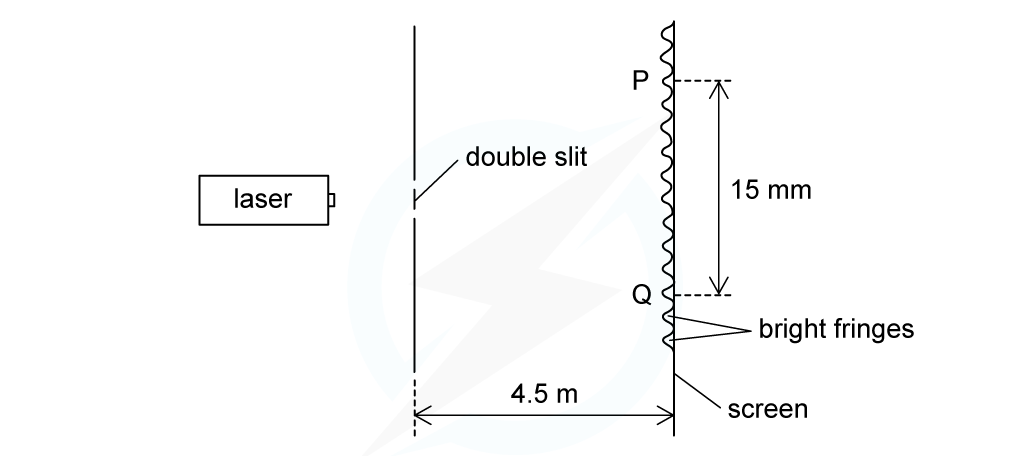Double Slit Interference
- Young’s double slit experiment demonstrates how light waves produced an interference pattern
- The experiment is shown below

Young’s double-slit experiment arrangement
- When a monochromatic light source is placed behind a single slit, the light is diffracted producing two light sources at the double slits A and B
- Since both light sources originate from the same primary source, they are coherent and will therefore create an observable interference pattern
- Both diffracted light from the double slits create an interference pattern made up of bright and dark fringes
- The wavelength of the light can be calculated from the interference pattern and experiment set up. These are related using the double-slit equation

Double slit interference equation with a, x and D represented on a diagram
- The interference pattern on a screen will show as ‘fringes’ which are dark or bright bands
- Constructive interference is shown through bright fringes with varying intensity (most intense in the middle)
- Destructive interference is shown from dark fringes where no light is seen
- A monochromatic light source makes these fringes clearer and the distance between fringes is very small due to the short wavelength of visible light
Worked example
A laser is placed in front of a double-slit as shown in the diagram below. The laser emits light of frequency 750 THz. The separation of the maxima P and Q observed on the screen is 15 mm. The distance between the double slit and the screen is 4.5 m.Calculate the separation of the two slits.
The laser emits light of frequency 750 THz. The separation of the maxima P and Q observed on the screen is 15 mm. The distance between the double slit and the screen is 4.5 m.Calculate the separation of the two slits.

Examiner Tip
Since a, x and D are all distances, it's easy to mix up which they refer to. Labelling the double slit diagram in the way given in the notes above will help to remember the order i.e. a and x in the numerator and D underneath in the denominator.

